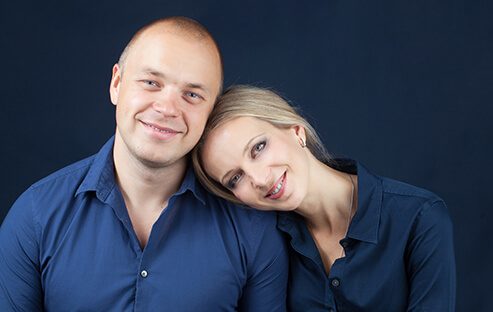Call us 713-560-7859
Editing in professional photography: 4 basic steps
When you book a photo session, you pay not only for the images, but also for the session fee that encompasses the photographer’s time spent both in pre-production (consulting the client, setting up the equipment) and post-production (culling and editing images), cost of materials (batteries, equipment, and its maintenance), studio rental and, most importantly, for the professionalism of the photographer.
The skill of the photographer is determined by how well he can choose lighting, vintage point, and lens that will emphasize face features and present the person in the best light. Since I photograph people on a regular basis I can quickly choose the ideal lighting and angle to suit each face type. However, the term that raises the most questions, and is misunderstood by many is “photo editing” or “post-processing”.
The skill of the photographer is determined by how well he can choose lighting, vintage point, and lens that will emphasize face features and present the person in the best light. Since I photograph people on a regular basis I can quickly choose the ideal lighting and angle to suit each face type. However, the term that raises the most questions, and is misunderstood by many is “photo editing” or “post-processing”.
What is photo post-processing?
In the field of professional photography, this concept is broad, since there are many requirements for photos. It mainly includes cropping, color correction, retouching, and sharpening.
Cropping
Cropping is the reframing of the photo. It is the trimming of the edges of an image and rotating it (changing its aspect ratio) in order to improve the visual impact and composition. In portrait photography an image is cropped to remove unwanted areas or distracting background elements, to bring more balance to the shot and to focus the viewer’s attention on the subject. Framing is done manually for each picture and is not always required.
Color correction
A very important step which aim is to make the picture more expressive and realistic.
In view of the fact that camera perceives colors differently than the human eye, fine tuning of skin tones, light and dark areas is required to achieve the correct color balance. Computer screens provide their own light. And because of the difference in luminance of computer screen and photo paper it is important to adjust the photo for print so that the image does not lose in colors or contrast.
In view of the fact that camera perceives colors differently than the human eye, fine tuning of skin tones, light and dark areas is required to achieve the correct color balance. Computer screens provide their own light. And because of the difference in luminance of computer screen and photo paper it is important to adjust the photo for print so that the image does not lose in colors or contrast.
Retouching


Retouching is complex photograph processing which includes correction of skin defects and general retouching of the image. This is not a quick fix, it takes some time, and it consists of many little steps that add up to create a nice picture.
Post-processing includes the elimination of blemishes, fine wrinkles, pimples and circles under the eyes. It helps lower the shine on the skin and correct other skin imperfections that interfere with the aesthetic perception of the photo portrait. It serves as a tool that can strengthen the dynamics of the picture, smooth out the skin tone and increase the contrast in the photos, which only adds expressiveness to the portrait.
Post-processing includes the elimination of blemishes, fine wrinkles, pimples and circles under the eyes. It helps lower the shine on the skin and correct other skin imperfections that interfere with the aesthetic perception of the photo portrait. It serves as a tool that can strengthen the dynamics of the picture, smooth out the skin tone and increase the contrast in the photos, which only adds expressiveness to the portrait.
Skin imperfections is everything that is not present in the usual condition, that is, scratches, pimples and redness on the skin. Important note, birthmarks and wrinkles are not considered as defects, so if there is something on your skin that you do not want to see in the photos, report it to the photographer in advance.
All retouching is done with preservation of the texture of the skin. I do not make people look like they are (advertising/promoting a facial cream) on an advertisement, I go for realism when editing, to make photos look professional. I do not strive for perfect skin, because nobody has perfect skin.
All retouching is done with preservation of the texture of the skin. I do not make people look like they are (advertising/promoting a facial cream) on an advertisement, I go for realism when editing, to make photos look professional. I do not strive for perfect skin, because nobody has perfect skin.
There are many post-processing techniques and it is important to know which one to use in different circumstances. For example, blemish removal deals with little skin imperfections like acne, scars, blackheads, fine wrinkles and moles. Some of these things stay and some of these things go. And it totally depends on a client whether some of them should be removed. I keep things that are permanent there. And most of blemish removal means getting rid of distractions, e.g., fly away hairs, wrinkles on the clothes, specks of dust.
With the help of contouring (such facial features/lines as) cheekbones, chin line, a line of the nose, eyebrows – any facial lines, if they are slightly darkened, will increase in volume and contrast. The man in the picture, for instance, will look more rigid and strong-willed.
With the help of contouring (such facial features/lines as) cheekbones, chin line, a line of the nose, eyebrows – any facial lines, if they are slightly darkened, will increase in volume and contrast. The man in the picture, for instance, will look more rigid and strong-willed.
Sharpening
At this stage, details are emphasized and the perfect combination between a sharp image and concealing of skin defects is achieved. For each frame, these parameters are tuned individually.
As you can see photo editing is an essential step in photo production and many photographers spent hours perfecting the images.
SUBSCRIBE FOR THIS BLOG


